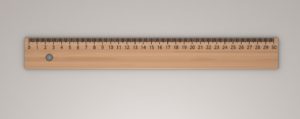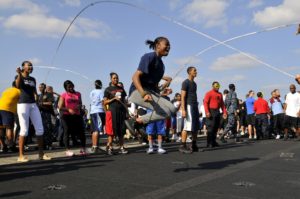Education, MY Classroom
29 Leap Day Activities for Children
To mark this leap day, here are lots of activities for you to try with your children. Designed to encourage thinking skills, promote language development, develop mathematical reasoning, get your child moving, and enable you to spend quality family time together, scroll through the list and you are sure to find several ideas to enjoy on this special day. Some are designed as timed challenges, but you may choose not to use a timer and allow children longer amounts of thinking time. A variety of ideas are included to suit children of different ages.
Oral Language, Vocabulary Development and Research Skills
-
What is the definition of leap? Can you use leap in a sentence?
-
Can you think of synonyms (other words) for leap?
-
How many words can you think of that rhyme with leap?
-
Using leap as the root word, build a word tree (i.e. add prefixes and suffixes to create new words, e.g., leaping). What is the past tense of leap? What is the past participle of leap? (Leaped (US)/Leapt (UK)? Can you think of other words that follow the UK past tense/past participle pattern? E.g., creep, sweep etc.)
-
What is meant by ‘take a leap of faith?’
-
How many leaping animals can you think of in one minute?
-
Which animal can leap the highest do you think? Investigate the highest jumpers here.
- Can you learn our leap year poem?

Physical Education & Healthy Lifestyles
-
What exercise features jumping in its title? (Jumping Jacks – how many can you do in 30 seconds/1 minute?)
-
How many frog leaps can you do in 30 secs/1 min?
-
Try a Standing Jump. Draw a line on the ground with chalk (or mark it with masking tape). From a standing position behind the line, with feet slightly apart, jump forward, swinging the arms, bending the knees and landing on both feet. Mark the distance travelled. What is your best score out of 3 attempts? Can you calculate the average of your three attempts?
-
Try skipping. How many jumps in a row can you do? Can you do a double under? Change the direction in which you turn the rope. How many jumps in a row can you do this time? Try skipping with a friend. How many jumps in a row can the pair of you do?
-
Have a sack race. No shuffling! Let’s see you jump!
-
How many sports can you think of with jump in their name? (High jump, long jump, triple jump, ski jump, show jumping, base jumping – can you think of others?)
-
What is the difference between the long jump and triple jump? Can you find out the world male and female record holders for each and the distances they jumped? Use chalk and a measuring tape to measure and mark the distance the record-holders travelled. What did you discover?
-
How many sports/activities can you think of where jumping is an important skill? (Basketball, cheer-leading, diving, figure skating, gymnastics, hurdles, parkour, skipping, steeplechase, trampolining, volleyball – can you think of others?)
-
What is the highest a person can jump from a standing position on the ground do you think? Check out the Guinness World Record here.
Mathematical Development
-
Ask young children to make sets of 4 objects. Others can make a set of 29. Discuss the importance of these numbers in relation to leap years.
-
Count to 4. What number comes before/after 4? Count to 29. What number comes before or after 29? What number comes before/after 2020?
-
Draw a 4cm line. Draw a 29cm line. Think of things that are approximately 4cm/29cm. Measure them and see how close your guesses were.
-
Try a variation on the Countdown Numbers Game: Roll a dice 6 times and write down each number you get. Can you use these numbers and any mathematical operation to make 29? Can you do so within 1 minute?
- Print off a calendar for February, masking some of the dates. Can your child fill in the missing numbers? Can they tell you what day March 1st will fall on? What day was January 31st?
-
How many days are in a standard year and how many are in a leap year? Discuss why leap years occur – it takes earth 365 days to orbit the sun.
-
Calculate how many days we have had so far in 2020? How many are left?
-
Investigate how many leap years occur in even decades? Is this the same for odd decades?
-
How can you figure out if a year is a leap year? (It is divisible by 4). Set a ‘Leap or Not’ challenge and ask your child to figure out if particular years are leap or not. Include multiples of 100 and have them investigate if the rule applies. In such cases, the year is only leap if it is divisible by 400. Can they work this out for themselves?

Then, Now and in the Future – History & Personal Development
- Find out who introduced leap years to the calendar.
-
What age were you four years ago? What age will you be in four years time? Can you think of four things you can do now that you were unable to do 4 years ago? What are 4 things would you like to achieve/4 skills you would like to master before leap year 2024?
-
Create a time capsule to be opened on February 29, 2024. Write a letter to your future self outlining your hopes and dreams. Include a diary entry of this day to remind yourself what was happening in 2020, both in your personal life and in world news. Who are your best friends? What hobbies do you enjoy? What are your current favourite things (food, drink, colour, TV show, game etc.) What are your goals for 2024? What is in the news headlines today? Who is in government in your country? What challenges is the world facing? What problems do you hope we will have solved by 2024? You may wish to include a photo of yourself and some newspapers from today. What else could you include?
A Note on Jumping and Child Development
By the age of 3, most children can typically jump forward 2 feet, starting with and landing on both feet at the same time. For younger children, or those still working to develop this skill, hold your child’s hand while they jump. This allows them to feel safe. Using a trampoline is another great way to develop this skill (and better for your mattresses than 5 little monkeys jumping on the bed!) Encourage your child to jump over small objects, to leap like a frog, or to jump off low surfaces, e.g. the bottom stair. Blowing bubbles and encouraging your child to jump to catch them is another great idea.

If you have any other great ideas to share on this leap day, please post them in the comments below.

